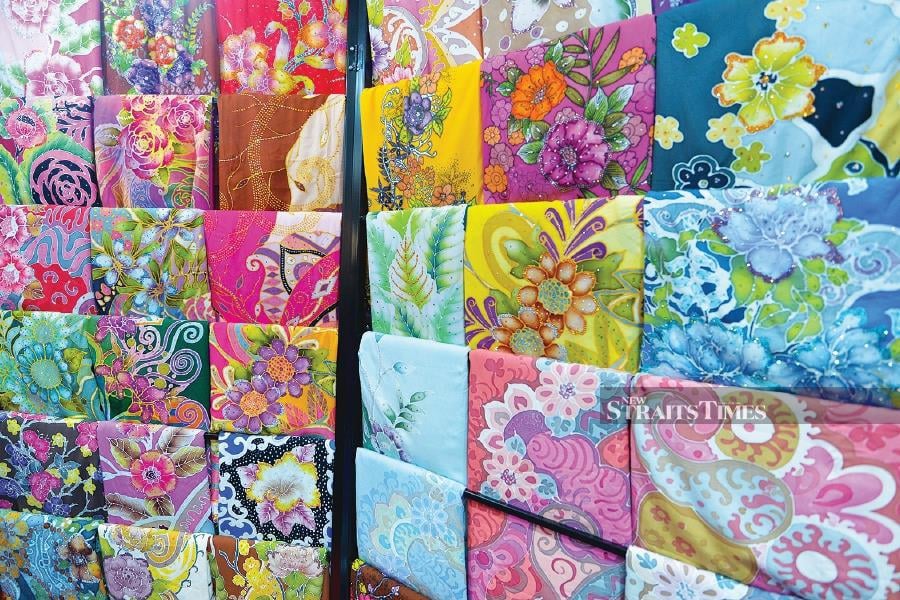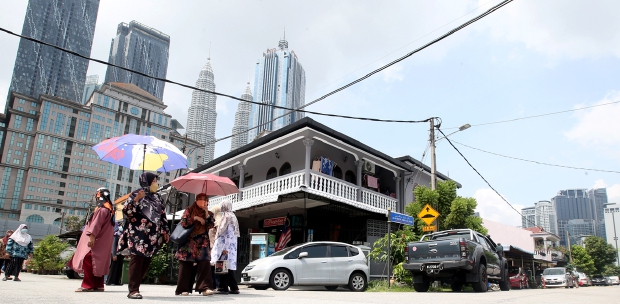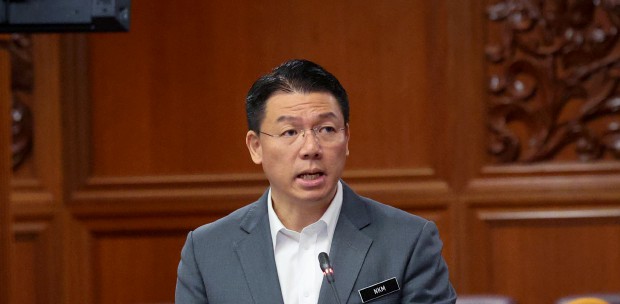Batik clothing was a bestseller at the Malaysian Family Aspirations Tour in Kelantan.
Even though produced by inmates from the Pengkalan Chepa Prison, Malaysians still bought it without any prejudice.
This is a good sign. Hopefully, more opportunities are given to inmates to discover their potential and to give back to the community.
This event is one example where Malaysian batik is rejuvenated by efforts to reintroduce and repopularise it. Universiti Utara Malaysia (UUM) introduced its own batik, Cyntok Bhatik, in 2019.
This award-winning product is based on designs inspired by the tree found at UUM Sintok's forest.
Universiti Malaysia Terengganu has its own batik product, Batikita, using the turtle as its primary motif.
Other public institutions, private companies, non-governmental organisations or entrepreneurs might have their own ideas to share.
Malaysian batik is a living heritage that evolves without jeopardising its qualities.
Does the rest of the world know? They know about our neighbour's version. Indonesian batik is popular globally.
This is probably due to the United Nations Educational, Scientific and Cultural Organisation (Unesco) accepting Indonesian batik as one of humanity's intangible heritage.
Indonesian batik was acknowledged in 2009.
As the name Indonesian batik implies, there are other versions out there like batik-type cloths in Africa and Oceanian region.
The latter is connected to our Nusantara region through the Austronesian language family.
There are theories that suggest batik originated from the tattoo culture in Nusantara and Oceania, and once major religions found its way to Nusantara, the tattoo culture among Malays and Javanese faded because the body was regarded as something precious.
The tattoo designs were transferred to cloth and thus batik was born.
As far as I know, the National Heritage Department has not nominated Malaysian batik to be inscribed in Unesco's intangible heritage list.
The department has done an excellent job with the nomination of Dondang Sayang, silat, pantun, Ong Chun and songket, all accepted by Unesco.
Two more — Pekan Sari and Mek Mulung — are waiting to be inscribed.
Mak Yong theatre was the first intangible heritage of Malaysia recognised by Unesco, but through a different process.
It was incorporated into the existing list from the previous Masterpieces of Oral and Intangible Heritage of Humanity.
In 2020, Malaysia succeeded in nominating two intangible cultural heritage with countries that share the same heritage.
Malaysia and Indonesia nominated the pantun together, while China shared the Ong Chun ceremony with Malaysia.
This approach is quite different from the previous measure that Unesco had taken in the past when accepting a nominated intangible cultural heritage into its Representative List of the Intangible Cultural Heritage of Humanity.
Even during the initial phase of the 2003 Convention, Unesco recognised that an intangible cultural heritage can be found across borders.
Will Malaysia proclaim Malaysian batik as a shared heritage with Indonesia as it did for pantun? This would be unlikely due to two reasons.
One is because Indonesians are very proud of their batik. A claim by us might cause the same reactions from our neighbour when the Balinese dance was mistakenly shown in Tourism Malaysia's video promotion some years ago.
The second reason is because even untrained eyes can see the difference between Malaysian and Indonesian batik.
Malaysian batik had achieved its distinctiveness through years of adaptation and evolution in a purely local context, as shown by the advent of Cyntok Bhatik and Batikita.
It would be beneficial to stakeholders of batik if Malaysia nominates it to Unesco's heritage list. More Malaysian batik products can be sold internationally.
Private companies could implement batik appreciation days or weeks for employees.
The hospitality industry could refurnish and redesign elements in hotels and resorts to include batik.
Schools and universities could introduce batik making as an extracurricular activity.
More events can be done centered on batik to entice domestic and international tourists.
Maybe even the military can introduce batik motifs in its army, navy and air force apparel.
We have to be proud of our cultural heritage and safeguard it through awareness and engagement. If not us, then who else?
The writer is senior lecturer at the School of Tourism, Hospitality and Event Management, Universiti Utara Malaysia
The views expressed in this article are the author's own and do not necessarily reflect those of the New Straits Times





